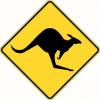
Originally Posted by
Doug Dawson

There is also the dampening effect of having a chip breaker "spring loaded" against the cutting edge of a bevel down plane iron, which is an advantage not to be underestimated.

Originally Posted by
Derek Cohen

Will you explain that Doug?
Regards from Perth
Derek
Not being Doug, this is my understanding of the effect Leonard Bailey explained in his patent to allow the use of thinner blades. The pressure of the chip breaker against the iron was to reduce the effects of metal distortion and lessen chatter.
jtk
"A pessimist sees the difficulty in every opportunity; an optimist sees the opportunity in every difficulty."
- Sir Winston Churchill (1874-1965)




 Reply With Quote
Reply With Quote







